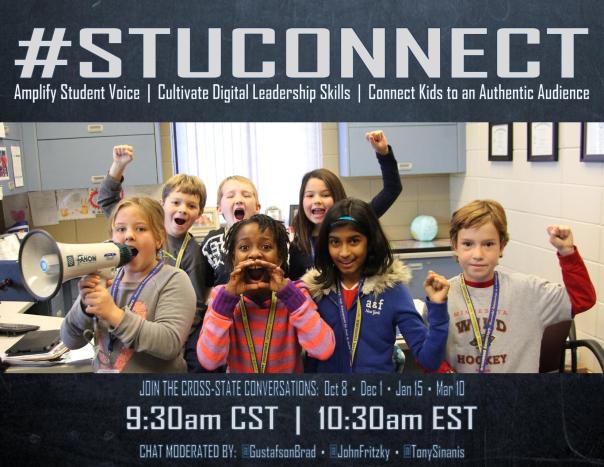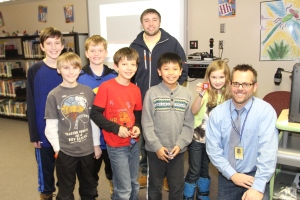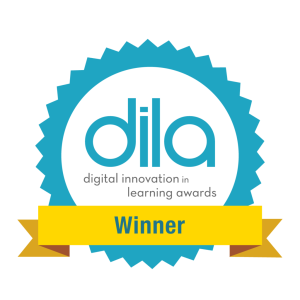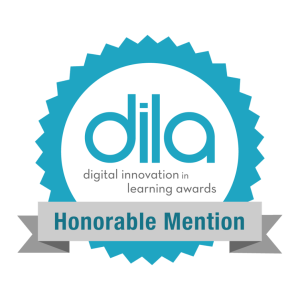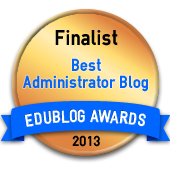Blog Archives
My Pastor was Right. Again.

So a funny thing happened a few years ago. I was sitting in church and our pastor at the time, Steve Wiens, started talking about neuroplasticity. I’ve always been a big nerd at heart, so I immediately took interest. Actually, I was totally eating the science up and loving every second of it. The truth of the matter is that Steve’s message helped me overcome some gunk in my life, and it’s a message I still carry with me when reflecting on change, innovation, and education.
In a nutshell, here’s what I gleaned from Steve’s sermon. We all have habits, tendencies, or even addictions that have become hard-wired into us. Some of these habits are good (holding the door for others, showering, and saying “thank you” are a few examples). Other habits are not so good. In fact, they can be downright destructive (fill in the blank with whatever unhealthy habit or failed New Year’s resolution you have here). If you’re an advanced learner or high-flyer you’re already connecting my sermon notes to education…but try to live in the moment and bear with me one more paragraph.
Our pastor likened these tendencies to footpaths formed in the snow. (I live in Minnesota mind you, so I hope you’re envisioning a lot of snow and very deep footpaths!) The more we travel a path, the easier it becomes to travel. Conversely, forging a new path can be extremely challenging. The first few times through the snow are always the toughest. In fact, it can be so difficult to take a new path that we might choose to revert down the same old path even when we recognize it is no longer the right direction in our lives.
Now on to the neuroscience of educational change. Creating new neurons involves linking something new to existing schema. (Remember, you can’t do this without a new path.) You’ve got to walk differently, practice, and persevere. So how might we link best practice to innovation in education? How do we connect the two in a manner that is “walkable” for others? What does that path even look like?
I believe that we’ve reached a point in education where we are collectively capable of giving kids more than they are currently receiving. All kids deserve innovative schools and I’m not okay with the fact that not all kids are experiencing this. There’s more work to do!
How do we get rid of some of the educational gunk (a.k.a. past tendencies, habits, etc.) and form some new dendrites? (See what I did there with the dendrites thing?!) I propose that we start by taking the first step. And then the next. Here are a couple examples so that this is not pure hyperbole:
- We know that students deserve redesigned learning spaces that support the 21st-century skills they’ll need…so we should take the first step in making it happen within our own sphere of influence (classroom, school, district, etc.)
- We know that we cannot be the experts of everything, and that connecting with other educators regardless of time/proximity only makes sense…so we should take the first step in helping a colleague on this path. We need to get more people connected so we can better serve our students.
Thinking different requires different steps. Different doing. And it is possible! My pastor was right.
_
Yes! This blog is moving to a new home. Hop over to www.BradGustafson.com to see how the Adjusting Course blog looks “all grown up.” I’d love your feedback on the new site too.
Pedagogy First (video)
Our kids are counting on us to lead learning with a relevant and connected pedagogy. The approach we use is critical to students’ long-term success. In order to put kids first we’ve got to change the narrative. We’ve got to prioritize pedagogy…NOT apps or devices.
In order to do this we must begin by asking better questions:
“How might we provide students an authentic audience for their work?”
“In what ways can we tap into Social Media as Learning Media?”
“How can we infuse student voice and innovation into the Common Core State Standards?”
“What is the best thing that could happen if we embrace a more connected approach to teaching and learning?”
“What traditions and educational staples (pun intended) do we need to STOP doing?”
It’s time to get serious about pedagogy. Teaching the YouTube Generation without providing safe and scaffolded opportunities for students to contribute to YouTube is absurd. We’ve got to connect kids to authentic learning experiences that are congruent with the collaborative world they live in. Click HERE to view a three minute video highlighting some of the ways our team is connecting students to their world.
Connected Learning
Our mission is to plan Professional Development (PD) opportunities that are so responsive that every single teacher walks away from their breakout session-choice feeling empowered. Each month’s focus will align with one of our three building goals:
1.) High Student Achievement in Literacy
2.) Meaningful Technology Integration
3.) Relationships and Culture
HUGE shout-outs to our PD Chair, PD team, and our site data team. Your time and leadership has us in a great position to focus our efforts while continuing to learn and grow.
Our first round of staff PD Breakout Sessions will be Monday, October 27th and the focus will be technology. The session options below were planned based on staff feedback collected using the “Empowered Learning” forum in Moodle last spring. Sign-up for each session can be done online and Continuing Education Credits (CEUs) are available.
Session 1 (Flipped)
Connecting with Classrooms across the Country
Guiding Question: How might we teach students to connect and share responsibly? We’ll respond to the video and discuss the pedagogy & tools to connect kids to an authentic audience. We will also participate in a GHO video-conference with a school in another state. Please view the five minute “flipped PD” video prior to our session.
Session 2
Twitter 101: Getting Started…Getting Connected
Guiding Question: What is Twitter and how are educators leveraging it to connect and share? Learn the basics of Twitter like how to Tweet, basics of the bio, and the art of the hashtag. There will be a time for collaboration and assistance in setting up a Twitter account at the end of the session.
We’re looking forward to experiencing many teacher-led sessions facilitated by our very own #GWgreats over the course of the school year. This year we are also piloting an approach to making our monthly PD breakouts OPTIONAL for staff. If you’d prefer to engage with a monthly theme in a different way than what we have planned, we want to empower you to do so. Own your learning! Attend an EdCamp, organize a cross-grade collaborative conversation, observe a colleague and try something new.
A special thank you to the connected educators from across the country that took time to share a short video clip about how/why they are connecting. They’re listed below in order of appearance. I have learned so much from these educators, and encourage you to follow them all on Twitter:
Pernille Ripp | @pernilleripp
Natalie Hull | @misshulljse
Adam Welcome | @awelcome
Erin Klein | @kleinerin
Penngrove Elementary Staff | @mrsnewman014 @msjanuleski @mcandersen88 @ohsposato @mrsfadeji
Brian Costello | @btcostello05
Celeste Mayhood | @celesteclm
John Fritzky | @johnfritzky
Justin Schleider | @schleiderjustin
Becca Bailey | @artwithbailey
Eric Sheninger | e_sheninger
Heather Cooper | @hcooper815
Shelly Roche | @mrsrochejse
Kory Graham | @tritonkory
Jeff Bradbury | @teachercast
Kimberly Hurd | @khurdhorst
Ashley Drill | @mrsdrill3rd
Jamie Tewksbury | @mrstewksbury3rd
Tony Sinanis | @tonysinanis


